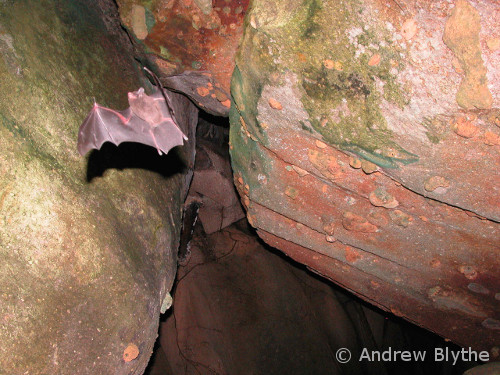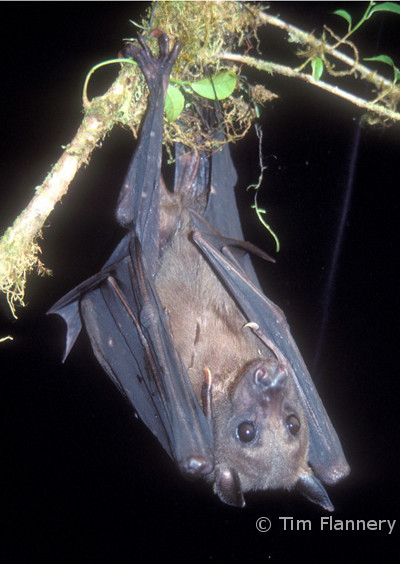When I was still a teenager, I had my first opportunity to work with bats while volunteering to help a PhD student in his fieldwork. I quickly developed a soft spot for these incredible animals. Bats are diverse and fascinating, yet they have been the target of much misunderstanding and persecution.

As a result, bat populations are declining everywhere. It is the Year of the Bat and here at EDGE we are thrilled to promote awareness of the only flying mammals in the world. Bats are key players in the ecosystems, through their various activities contributing to different factors. For example, fruits and nectar eating bats act as pollinators and seed dispersers and are crucial in maintaining rainforests as well as other habitats. Species which feed on insects on the other hand, provide insect control
Bats are extremely diverse and have evolve to thrive of various diets while most eat fruits or insects there are species eat frogs, bats that fish and even vampire bats, which as you may have guessed drink blood from mammals and birds. There are bats with six-foot windspans, and If you are wondering what is the world smallest mammal the answer is of course a bat.
Approximately, one fifth of all mammals are bats. There are 71 species of EDGE bats. These are bats which are evolutionarily distinct and globally endangered, or are layman’s terms extraordinarily and in the edge of extinction. Of EDGE’s 100 priority species for conservation 10 are bats. Some of these are almost a mystery, with very little known of the species and often no photos ever taken.
Meet the ten most extraordinary and endangered bats of the world:
The New Zealand Greater Short-tailed bat (Mystacina robusta) has not been seen since 1967, together with its smaller relative, the New Zealand Lesser Short-tailed bat (Mystacina tuberculata), are the only species of bats to spend a lot of time on the ground. They use smell to hunt of the leaf litter for insects, and both species are threatened by rats and other predators introduced into New Zealand. See fascinating footage of this species.
The Jamaican Greater Funnel-eared Bat (Natalus primus) and the Cuban Greater Funnel-eared Bat (Natalus jamaicensis) are members of a small, ancient family of cave-dwelling bats that evolved in the West Indies. The Jamaican species only survives in central Jamaica where they are threatened by a population of feral cats. The Cuban species is the largest of this ancient group and the first living population was discovered in 1992, they are also only found ion one cave in the remote Cueva La Barca.
The Seychelles Sheath-tailed bat (Coleura seychellensis) belongs to another ancient family; sheath-tailed bats, so-called because of the nature of the membrane which stretches between the hind legs. This increases the animal’s ability to manoeuvre by adjusting the hind legs in flight.

Buelmer’s Fruit Bat (Aproteles bulmerae) is the largest bat species to roost in caves. It has a remarkable ability hover and even flies backwards! It was believed to have become extinct at the end of the last Ice Age glaciations. But in 1975, the species was rediscovered in a mountain cave in New Guinea.
Also from New Guinea, the Big–eared Bat (Pharotis Imogene) has only been collected once 1890 and never found again.
The Smokey Bat (A. schnablii) has no functional thumbs and is one of several species of bat endemic to the Atacama Desert in north-west South America.
Found only in Mount Nimba, in western Africa, Lamotte’s roundleaf bat (Hipposideros lamottei) has an elaborately modified nose and muzzle which form leaf-like projections that are thought to help focus the echolocation signals it emits through the nose.
Blunt-eared Bat (Tomopeas ravus) is the sole representative of a subfamily of bats yet very little is known about this tiny species. It has been found roosting under granite boulders and appears to be restricted to the arid and semi-arid coastal regions of Peru.
Bats have been around since prehistoric times and there are more than 1,200 species of them spread across the globe and its habitats; with the exception of Polar Regions and extreme deserts. They are essential to our ecosystems and several wonderful species are on the edge of extinction. This is the Year of The Bat so help us improve our relationship and understanding of these creatures.